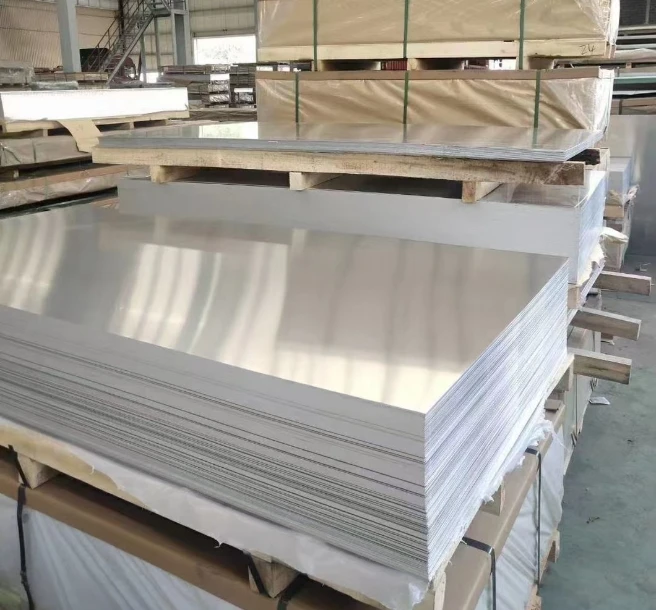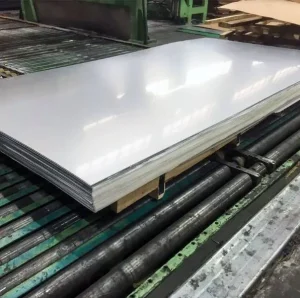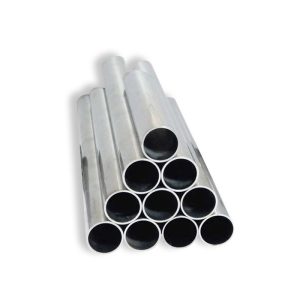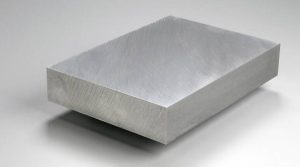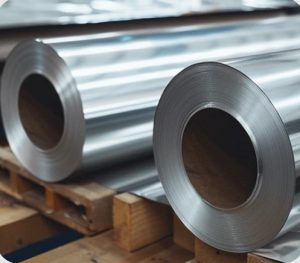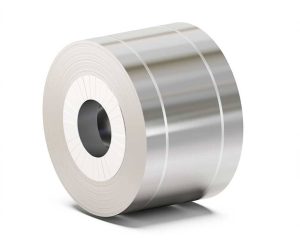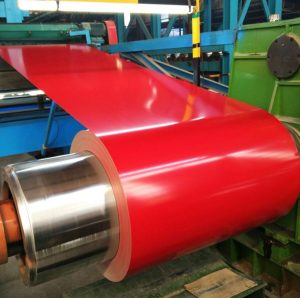Introduction
When it comes to the aerospace industry, material selection is key. High-strength alloys like 7475 aluminum sheets are a vital component in modern aircraft manufacturing. Known for their lightweight nature and exceptional strength-to-weight ratio, 7475 aluminum sheets are used in a variety of demanding applications.
In this article, we will explore three high-strength aircraft uses of 7475 aluminum sheets, examining why it is a preferred material in aircraft design, construction, and maintenance. We will also provide comparisons with other aerospace alloys and address frequently asked questions about the material’s properties and applications.
1. Aircraft Fuselage Components
1.1 High-Strength Fuselage Construction
One of the primary applications of 7475 aluminum sheets is in the manufacturing of aircraft fuselages. The fuselage is the central body of the aircraft, housing critical components such as the cockpit, cargo, and passengers. This part of the plane needs to be incredibly strong while maintaining a low weight to ensure both safety and efficiency.
-
Tensile Strength: 7475 aluminum sheets have an impressive tensile strength of up to 570 MPa, making them one of the strongest materials used in aircraft construction.
-
Yield Strength: With a yield strength of 505 MPa, the alloy ensures that the fuselage can withstand extreme aerodynamic pressures during flight.
1.2 Advantages of Using 7475 Aluminum for Fuselages
-
Strength-to-Weight Ratio: The combination of high strength and lightweight properties makes 7475 aluminum ideal for aircraft fuselages, where structural integrity and fuel efficiency are both critical.
-
Corrosion Resistance: 7475 aluminum offers excellent resistance to stress corrosion cracking (SCC), an important feature for components exposed to high-stress conditions, like fuselages.
Comparison of Tensile Strength:
| Alloy | Tensile Strength (MPa) | Yield Strength (MPa) | Density (g/cm³) |
|---|---|---|---|
| 7475 Aluminum | 570 | 505 | 2.80 |
| 2024 Aluminum | 470 | 430 | 2.78 |
| 7050 Aluminum | 505 | 460 | 2.81 |
Table 1. Comparison of tensile and yield strength of aerospace aluminum alloys.
2. Aircraft Wing Structures
2.1 Strong and Lightweight for Wings
Another critical application of 7475 aluminum sheets is in the construction of aircraft wings. Wings are subjected to constant aerodynamic forces during flight, making their strength and resilience crucial for maintaining structural integrity.
-
Fatigue Resistance: The alloy’s fatigue resistance is one of its standout features, ensuring that wing structures remain strong and durable throughout the aircraft’s operational life.
-
Dimensional Stability: 7475 aluminum maintains excellent dimensional stability even under fluctuating temperatures, a crucial property for wings that face extreme temperature gradients during flight.
2.2 Benefits for Wing Construction
-
Enhanced Strength: 7475 aluminum sheets provide exceptional strength with a low density, helping to maintain the aerodynamic efficiency of the wing while providing structural stability.
-
Resistance to Deformation: The alloy’s resistance to plastic deformation and creep ensures the wings retain their shape over time, even under high-pressure conditions.
Key Applications in Aerospace Wings:
-
Wing Spars: 7475 aluminum is ideal for wing spars, which are the primary structural components that support the wing.
-
Ribs and Frames: The alloy’s combination of high strength and corrosion resistance makes it perfect for wing ribs and frame structures that need to endure high levels of stress and fatigue.
3. Aircraft Landing Gear Components
3.1 Durability for Landing Gear Systems
Landing gear is one of the most critical components of an aircraft, as it must endure high impact forces and repeated stress during takeoff and landing. 7475 aluminum sheets are often used in landing gear components, including struts, shock absorbers, and axles.
-
High Strength: The high tensile strength and yield strength of 7475 aluminum make it capable of withstanding the intense forces encountered during landings.
-
Impact Resistance: 7475 aluminum provides excellent resistance to impact and deformation, ensuring that landing gear components maintain their integrity after repeated high-stress events.
3.2 Benefits of 7475 Aluminum in Landing Gear
-
Fatigue Resistance: Landing gear components are subject to cyclic loading and fatigue over time. 7475 aluminum’s resistance to these stresses ensures that landing gear retains its performance throughout the lifespan of the aircraft.
-
Lightweight Construction: Despite its strength, 7475 aluminum is lightweight, helping to reduce the overall weight of the landing gear system, which is crucial for the fuel efficiency of the aircraft.
4. Comparison with Other Aerospace Alloys
While 7475 aluminum sheets are widely used in aerospace, it is essential to compare them with other commonly used aerospace alloys to better understand their advantages.
| Property | 7475 Aluminum | 7050 Aluminum | 2024 Aluminum |
|---|---|---|---|
| Tensile Strength (MPa) | 570 | 505 | 470 |
| Yield Strength (MPa) | 505 | 460 | 430 |
| Density (g/cm³) | 2.80 | 2.81 | 2.78 |
| Corrosion Resistance | Excellent | Excellent | Good |
| Fatigue Resistance | Excellent | Good | Good |
| Workability | Moderate | Moderate | Good |
Table 2. Comparison of aerospace alloys in terms of key mechanical properties.
5. Cost-Effectiveness of 7475 Aluminum Sheets
5.1 Performance vs. Cost
One of the reasons 7475 aluminum sheets are preferred in aerospace applications is their balance of performance and cost. While alloys like 7050 aluminum offer slightly higher performance in some areas, 7475 aluminum provides an excellent cost-to-performance ratio, making it an economically viable choice for high-performance components.
-
Cost Efficiency: 7475 aluminum provides excellent performance without the higher costs associated with alloys like 7050, making it suitable for large-scale production of critical parts.
-
Reduced Maintenance Costs: The high fatigue resistance and corrosion resistance of 7475 aluminum sheets contribute to longer component lifespans, reducing maintenance costs over time.
6. Frequently Asked Questions
Q1: Why is 7475 aluminum used in aircraft fuselages?
A1: 7475 aluminum is used in aircraft fuselages due to its high tensile strength and corrosion resistance, making it capable of withstanding the high aerodynamic pressures while maintaining a lightweight structure.
Q2: What makes 7475 aluminum suitable for wing structures?
A2: 7475 aluminum is fatigue resistant and provides dimensional stability under fluctuating temperatures, making it ideal for the high-stress conditions faced by aircraft wings.
Q3: How does 7475 aluminum compare to other aerospace alloys like 7050 and 2024?
A3: 7475 aluminum offers higher tensile strength and yield strength compared to alloys like 2024 and 7050, making it particularly well-suited for high-performance aerospace components.
Q4: Is 7475 aluminum more cost-effective than 7050 aluminum?
A4: Yes, 7475 aluminum provides an excellent balance of performance and cost. While it may not have the absolute highest strength of 7050, it offers a lower cost, making it ideal for large-scale aerospace production.
Q5: Can 7475 aluminum be used in other industries outside of aerospace?
A5: While 7475 aluminum is primarily used in aerospace, its high strength and fatigue resistance make it suitable for other industries such as military applications and high-performance automotive parts.
Q6: How does the fatigue resistance of 7475 aluminum impact aircraft longevity?
A6: The fatigue resistance of 7475 aluminum ensures that critical components, such as wings and fuselage, maintain their structural integrity over time, significantly extending the service life of the aircraft.
Conclusion
7475 aluminum sheets offer exceptional strength, fatigue resistance, and corrosion resistance, making them ideal for high-performance aerospace applications. From fuselage components and wing structures to landing gear systems, this alloy plays a crucial role in ensuring the safety, durability, and efficiency of modern aircraft. Its cost-effectiveness and long-lasting performance make it a preferred choice for the aerospace industry. By understanding the unique advantages of 7475 aluminum, manufacturers can make informed decisions that enhance aircraft performance and reduce operational costs.


